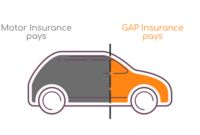Insurance for uninsured property damage is crucial in safeguarding your investments. From understanding the basics to exploring coverage options, this topic delves into the importance of protecting your property from unforeseen events.
Learn about the various types of insurance, factors to consider when choosing coverage, and the necessary steps to take after experiencing property damage without insurance.
Introduction to Insurance for Uninsured Property Damage

Uninsured property damage refers to situations where a property owner does not have insurance coverage to protect against damages to their property caused by various unforeseen events. These events can include natural disasters, accidents, or acts of vandalism. Having insurance coverage for uninsured property damage is crucial to ensure financial protection in case of such incidents.
Importance of Insurance Coverage, Insurance for uninsured property damage
Insurance coverage for uninsured property damage provides financial security and peace of mind to property owners. Without proper insurance, individuals risk facing significant financial burdens to repair or replace their property in the event of damage. This can lead to financial strain and potential loss of assets.
Common Scenarios of Uninsured Property Damage
- Natural Disasters: Events such as hurricanes, floods, earthquakes, and wildfires can cause extensive damage to properties. Without insurance coverage, property owners may struggle to cover the costs of repairs or rebuilding.
- Accidents: Accidental events like fires, explosions, or water damage can occur unexpectedly, leading to property damage. Insurance coverage helps mitigate the financial impact of these accidents.
- Vandalism: Acts of vandalism, such as graffiti or property destruction, can result in costly damages. Insurance for uninsured property damage can help property owners recover from such incidents.
Types of Insurance Coverage for Uninsured Property Damage
When it comes to protecting your property against damage caused by uninsured individuals, there are several types of insurance coverage options to consider. Understanding the differences between property insurance and uninsured/underinsured motorist coverage is crucial in determining the best coverage for your needs. Additionally, umbrella insurance can provide an extra layer of protection for uninsured property damage.
Property Insurance
Property insurance typically covers damage to your home or belongings caused by covered perils such as fire, theft, or natural disasters. However, property insurance may not cover damage caused by uninsured individuals or vehicles. It’s important to review your policy carefully to understand the extent of coverage for uninsured property damage.
Uninsured/Underinsured Motorist Coverage
Uninsured/underinsured motorist coverage is designed to protect you in the event of an accident with a driver who has little to no insurance coverage. This type of coverage can help pay for property damage and medical expenses resulting from a collision with an uninsured driver. It’s important to check if your policy includes coverage for property damage caused by uninsured drivers.
Umbrella Insurance
Umbrella insurance provides additional liability coverage beyond the limits of your existing insurance policies. This type of insurance can be beneficial in situations where the cost of property damage exceeds the limits of your primary insurance coverage. Umbrella insurance can help protect your assets and provide peace of mind in case of property damage caused by uninsured individuals.
Factors to Consider When Choosing Insurance for Uninsured Property Damage

When selecting insurance for uninsured property damage, there are several key factors to consider to ensure you have the right coverage in place. These factors can impact the type of coverage you need, the cost of premiums, and the level of protection you have for your property.
Impact of Deductibles on Insurance Premiums and Coverage
Deductibles play a significant role in insurance policies for uninsured property damage. A deductible is the amount you are responsible for paying out of pocket before your insurance coverage kicks in. Typically, the higher the deductible you choose, the lower your insurance premiums will be. However, it’s essential to strike a balance between a high deductible to save on premiums and ensuring you can afford the out-of-pocket costs in the event of damage to your property. Consider your financial situation and risk tolerance when deciding on a deductible amount.
Location of the Property and Influence on Insurance Options
The location of your property can also influence the insurance options available to you. Properties located in areas prone to natural disasters, such as hurricanes, earthquakes, or floods, may require additional coverage beyond standard insurance policies. Insurance companies may offer specific endorsements or riders to cover these types of risks. Additionally, properties in high-crime areas may have higher insurance premiums due to the increased risk of vandalism or theft. When choosing insurance for uninsured property damage, consider the location of your property and any unique risks associated with that area.
Steps to Take After Experiencing Uninsured Property Damage: Insurance For Uninsured Property Damage

After discovering uninsured property damage, it is crucial to take immediate action to ensure the safety of your property and expedite the insurance claim process.
Documenting the Damage
- Take photos and videos of the damage from multiple angles to provide visual evidence.
- Make a detailed list of all damaged items or areas in your property.
- Collect any relevant receipts, invoices, or documentation related to the damaged property.
Filing a Claim
- Contact your insurance provider as soon as possible to report the uninsured property damage.
- Provide the documentation of the damage, including photos, videos, and lists of damaged items.
- Fill out the necessary claim forms provided by your insurance company accurately and promptly.
- Cooperate with the insurance adjuster during the inspection and assessment of the damage.
- Keep records of all communication and documentation related to the claim for future reference.
In conclusion, securing insurance for uninsured property damage is a proactive step towards financial security. By being informed and prepared, you can mitigate the risks associated with unexpected property damage.
Understanding how gap insurance works can be crucial for protecting your finances in the event of a total loss. This type of insurance covers the difference between what you owe on your car loan and the actual cash value of your vehicle. Without it, you could be left with a significant financial burden. To learn more about how gap insurance works , it’s important to consider your specific situation and the potential risks involved.
Liability-only auto insurance is a basic coverage option that provides financial protection for damages or injuries you cause to others in an accident. While it may not cover your own vehicle’s damages, liability-only insurance is typically more affordable than full coverage policies. It’s important to understand the limitations of this type of insurance and consider whether it’s the right choice for your needs.
Explore more about liability-only auto insurance to make an informed decision.
State-required liability insurance is mandatory in most states to legally operate a vehicle on public roads. This coverage helps protect other drivers and their property in case you’re at fault in an accident. Understanding the minimum liability insurance requirements in your state is essential to avoid penalties or license suspension. To ensure compliance with the law, it’s important to have the necessary state-required liability insurance and maintain proof of coverage at all times.



